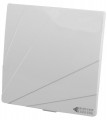Amplification coefficient
The amount of received signal amplification provided by the antenna. The higher this indicator, the more confidently the antenna will work in conditions of poor reception, the lower the signal level at which it will be ineffective. At the same time, it is worth considering that a high amplification coefficient is not a guarantee of high quality. Firstly, unscrupulous manufacturers and sellers may indicate figures in the specifications that do not correspond to real indicators. Secondly, the antenna amplifies not only the useful signal, but also various interferences, and in some cases a low amplification coefficient is preferable (for example, in dense multi-storey buildings, when the signal reaches the antenna from different directions and with different delays). And thirdly, performance above 40 dB can only be achieved using amplifiers (see below) — and amplifiers are also a source of noise, which in some situations can be quite noticeable.
Amplifier
The presence
of an active signal amplifier in the design of the antenna.
Any antenna amplifies the received signal due to its shape only, however, in some models, the design is supplemented by a separate electronic unit that increases the signal level at the output — an active amplifier. Antennas with this feature have the advantage of high amplification coefficient, which can also be achieved at a much smaller size than in models without amplifier. On the other hand, the amplifier requires an external power supply and is a potential source of interference since its circuits inevitably create their own noises. Therefore, in fact, the use of such antennas is justified only in areas with a weak signal level and the absence of interference and reflections — for example, in rural areas at a great distance from the repeater. In conditions of confident signal reception, the amplifier can turn out to be not only useless, but even harmful.
Cable length
The length of the connecting cable supplied with the antenna (often non-detachable). Quite a lot of models come with a cable right away, which eliminates the need to purchase it separately. And knowing the length of the cable, you can evaluate whether it is enough to reach the TV without additional cables.

